Execution Control
Add users:
AIQ supports adding more users during run time, i.e., while the tests are executing, users will be able to add more users depending on the requirement.
All these features are run-time only and help in changing the test conditions while the scenario is running.
Depending on the server, application, database servers, etc, users can add more users during the test execution; all the added users will start executing the test from the point of addition.
This is supported for both web application testing like Appvance Designer script, Sahi, and other protocol level testing like JMeter, SoapUI, etc.
In the Test Controller window, once the test starts Running, Click the drop-down menu for selecting the Reports and select “Execution Control” as shown in the below screenshot
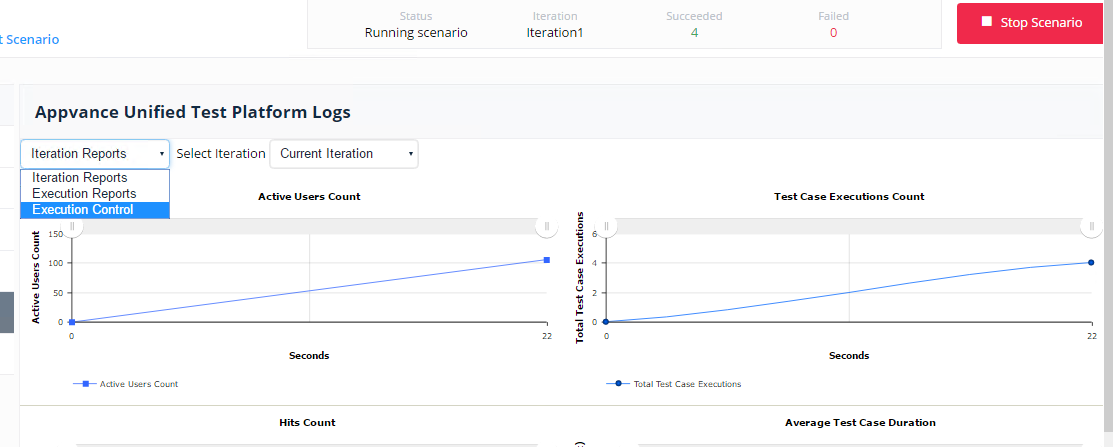
Execution Control Report Displays scalability index Chart which displays the status of all the Test Cases running. Test Cases can be in the following states.
-
Initializing • Running • Paused • Complete
Along with that, there are options to • Add users • Pause • Restart • Update • Terminate
All these options will be discussed in detail.
As you can see, the tests are running in the below-mentioned example, and navigating to the Execution Control window will display the status of Test Cases running.
Note: All these options are available at the Test Case level, meaning AIQ supports adding users at the Test Case level, Pausing a particular Test Case, Restart a particular Test Case, Updating a Test Case, and Termination a Test Case. Test Cases can be selected from the drop-down list.
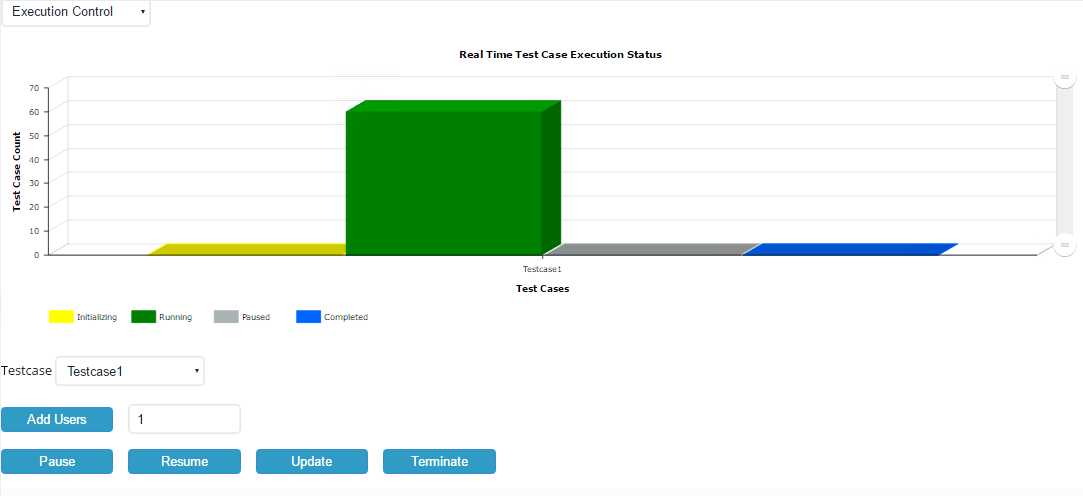
The active Virtual tab can be used to check the status of an ongoing execution as this is again a run time feature and it also displays the number of users running and the status of each user execution as seen in the below screenshot.
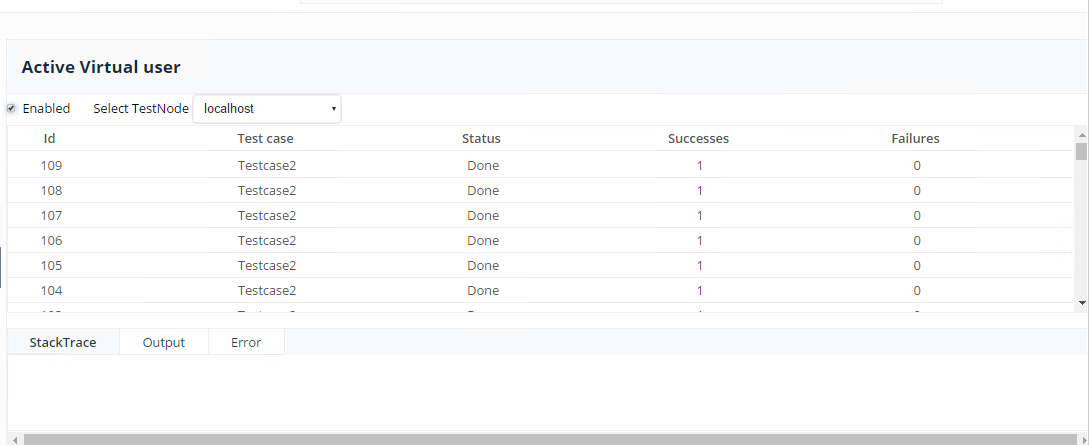
Now with the text box available next to Add users, provide the number of users required and click Add Users button.
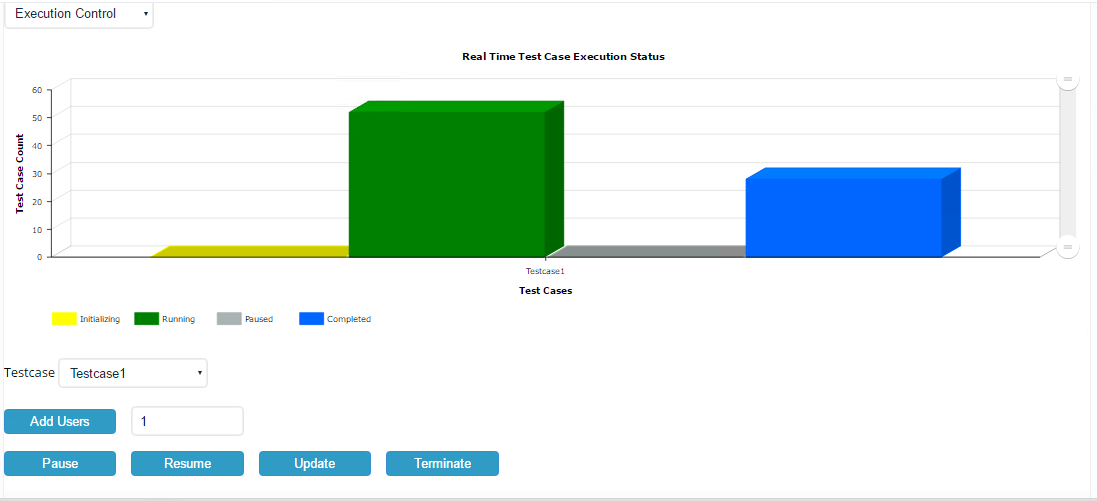
Navigate back to the Output window which displays the message telling “Processing the action Add on the particular Test Case” and also you can check the graphs displaying the increase in the total number of users.
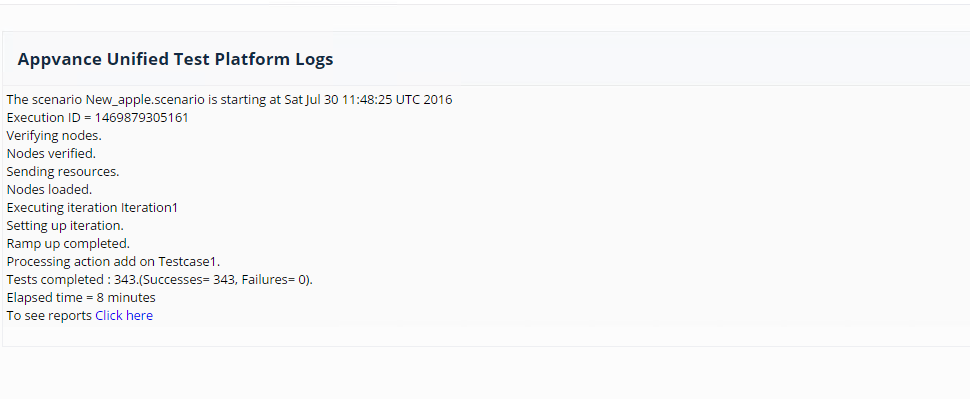
The active virtual user's tab will show the number of users added and the corresponding execution status.

Any number of virtual users can be added depending on the requirement.
Pausing:
This function makes it possible to pause one or more Test Cases without impairing the whole test. For example, when a particular Test Case is not working properly, and the Test Case is not anticipated in the design, the Test Case may keep trying to execute its actions endlessly without producing the required results, causing many irrelevant errors for the test result.
Select a particular Test Case from the drop-down list of available Test Cases in the Execution Control screen as shown in the below screenshot.
Click the pause button by selecting a Test Case, a message will be displayed in the output panel and the graph displays the status of the Test Case.
Users can pause as many Test Cases as required during run time.
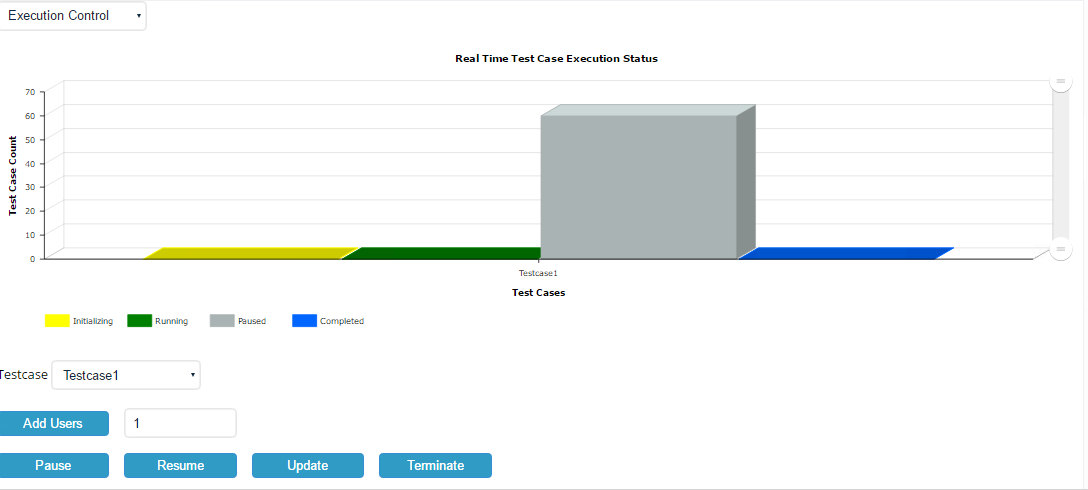
The screenshot from the output tab is given below
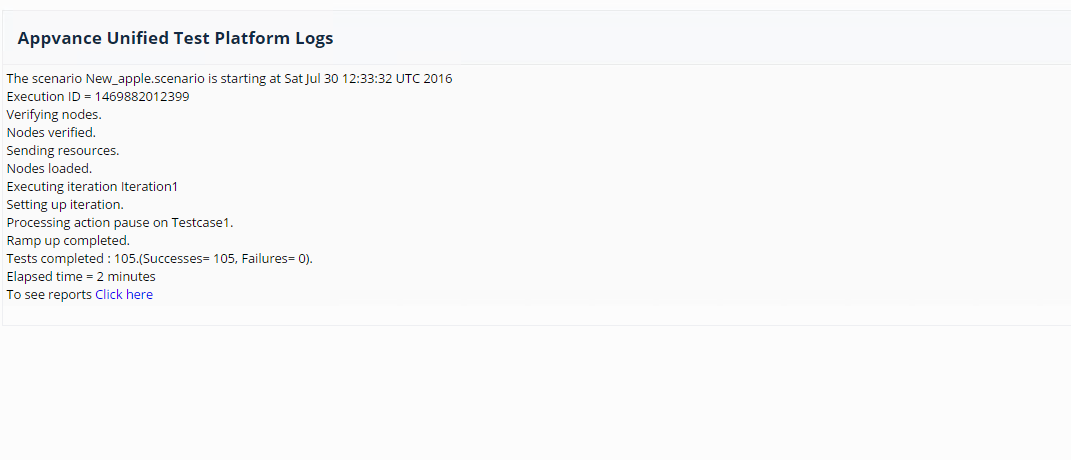
Restart
When required users can resume all the paused Test Cases by clicking the Restart button by selecting the Test Case from the drop-down list.
After selecting the Test Case from the drop-down and clicking on restart will resume the execution of the Test Case and a message will be displayed in the output panel and the scalability index graph displays the status of the Test Case as seen below screenshot.
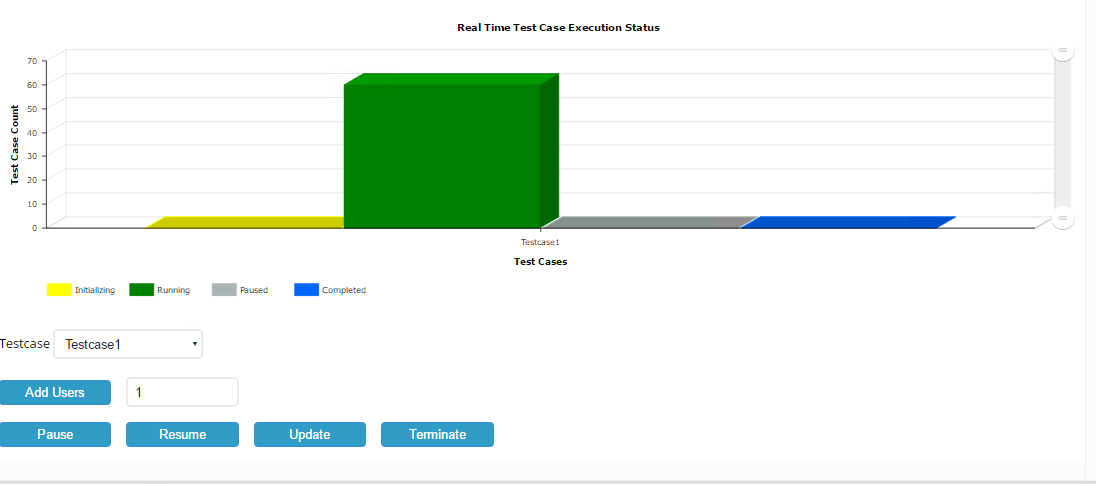
The screenshot from the output tab is given below
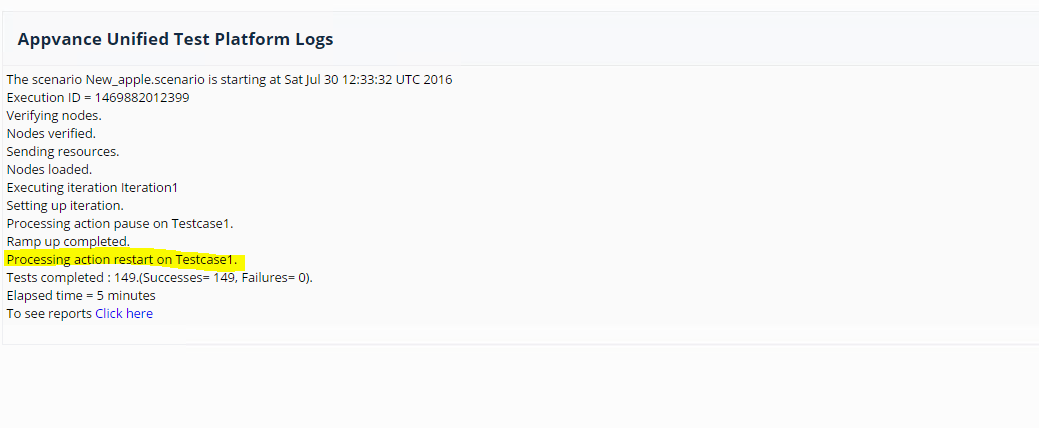
Update
Update functionality helps you change any Test Case (Test Case) that is running to a new Test Case (Test Case 1.1) and run the Test Case with the updated one.
The results will be a collection of both the steps from Test Case 1 and Test Case 1.1.
Example: Suppose a user is running a Test Case and one particular step was failing and with this feature, the user can go back and check the script, make necessary changes and save the script, Saved script will be immediately taken into account once the user clicks on Update button with the saved changes and the reports will have a collection of data from both the old and the updated Test Case.
The message will be displayed in the Output panel of the Test Controller once the user clicks on the Update button as seen in the below screenshot.

Terminate
With this feature, the user can terminate any faulty Test Case which is not required for the scenario. Test Case can be selected from the drop-down and can be terminated by running further by clicking the Terminate button. A message will be displayed in the output panel as seen in the below screenshot.
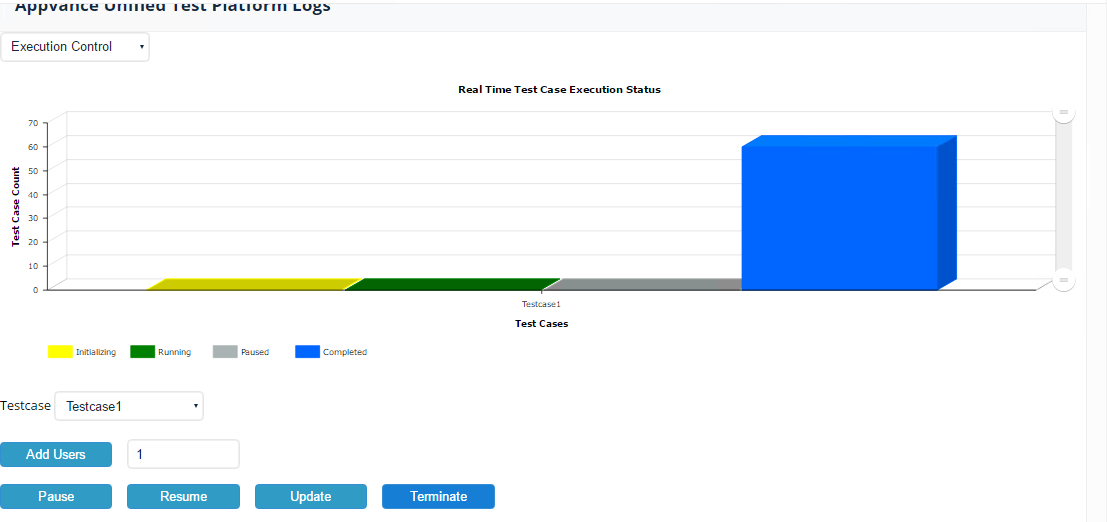
The screenshot from the output tab is given below

Different Test Cases
The below screenshot displays different Test Cases that can be selected from the drop-down and their status in the Scalability index graphs.